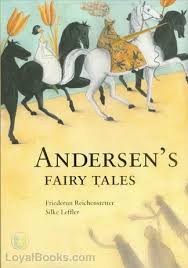The Naughty Boy
byIn this chapter titled “The Naughty Boy” tells of a quiet, elderly poet who leads a peaceful life, surrounded by books, memories, and the comfort of solitude. On a stormy evening, thunder rumbles and winds wail when a faint knock draws his attention. Upon opening the door, he finds a drenched child with golden curls and rosy cheeks, delicate as an angel yet trembling in the cold. The poet, guided by kindness, brings the boy inside, offering a warm blanket and a comforting meal of wine and roasted apples. As the boy dries off and his color returns, he is no longer helpless but vibrant, eyes gleaming with mischief. He soon reveals he is none other than Cupid—the bringer of love and trouble—carrying with him a bow, a quiver of arrows, and a troublesome spirit that turns affection into unexpected anguish.
After his short rest, Cupid announces that he must test his bow, pretending it may have weakened from the storm. Before the poet can object, the mischievous boy shoots an arrow straight into his chest, causing a sharp pang in both heart and mind. The poet stumbles, surprised not just by the physical sting but by the emotional upheaval that follows. Cupid, laughing gleefully, darts out into the clearing skies, leaving the once-serene poet now tangled in longing, confusion, and a cascade of newfound emotions. This betrayal marks a sharp transition in the story—from warmth and protection to deceit and pain. The poet’s kind gesture is turned against him, becoming a lesson not only in love but in the dangers of blind generosity. Through this act, Andersen illustrates how easily trust can be weaponized, especially when appearances deceive.
The poet, though elderly and wise, becomes a victim to the whims of love, illustrating how even the most guarded hearts can fall prey to Cupid’s arrows. He warns others, especially the young and unsuspecting, of the seductive charm that Cupid cloaks himself in. The poet explains that the boy is not simply a symbol of affection but a cunning trickster who targets the vulnerable, making maidens swoon and young men lose reason. His warnings fall on deaf ears, for Cupid’s innocent appearance fools many. This speaks to a universal truth: love, when driven by illusion or impulse, can cause turmoil. The story questions whether love is a blessing or a burden, and it challenges readers to see beyond the surface when feelings begin to stir.
In the tale’s final message, the poet shares his grief—not out of bitterness, but from learned experience. His voice becomes one of both wisdom and sorrow, urging readers to recognize the dual nature of love. While it can uplift, it also wounds, often without warning. His suffering becomes symbolic of those who have offered care, only to be left aching by those they trusted. The story is less about revenge and more about revelation, showcasing how vulnerability to love doesn’t diminish one’s worth but underscores the unpredictability of emotion. The poet’s words remain a timeless reminder: sometimes, the most innocent-seeming visitors carry the sharpest arrows.
Cupid, in this tale, is not painted as a malicious villain but as a mischievous force representing love’s unpredictability. Andersen cleverly personifies emotion, portraying Cupid not as a gentle god, but as a playful spirit who thrives on surprise and chaos. His visit to the poet suggests that no one is immune—whether old or young, learned or naive. Love strikes when least expected, disrupting peace with longing. Through this story, readers are encouraged to be cautious with their hearts and aware of the illusions that affection might bring. The caution lies not in avoiding love, but in understanding its power—its beauty matched equally by its danger.

